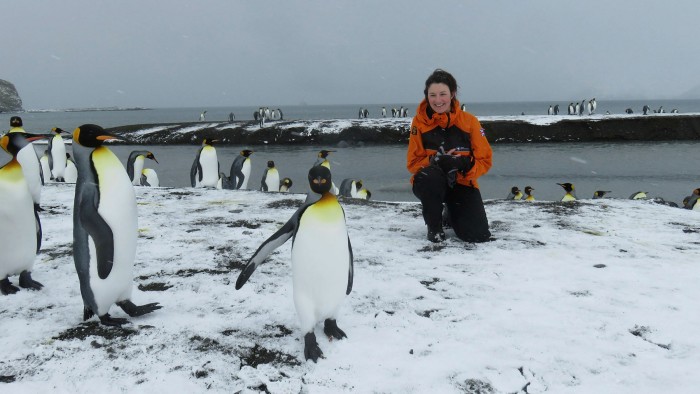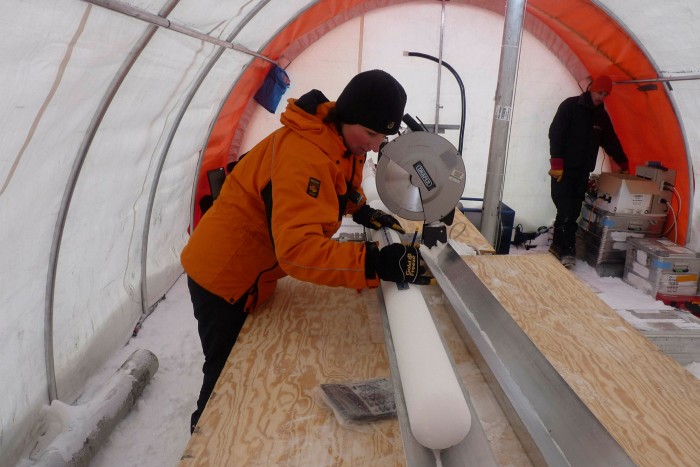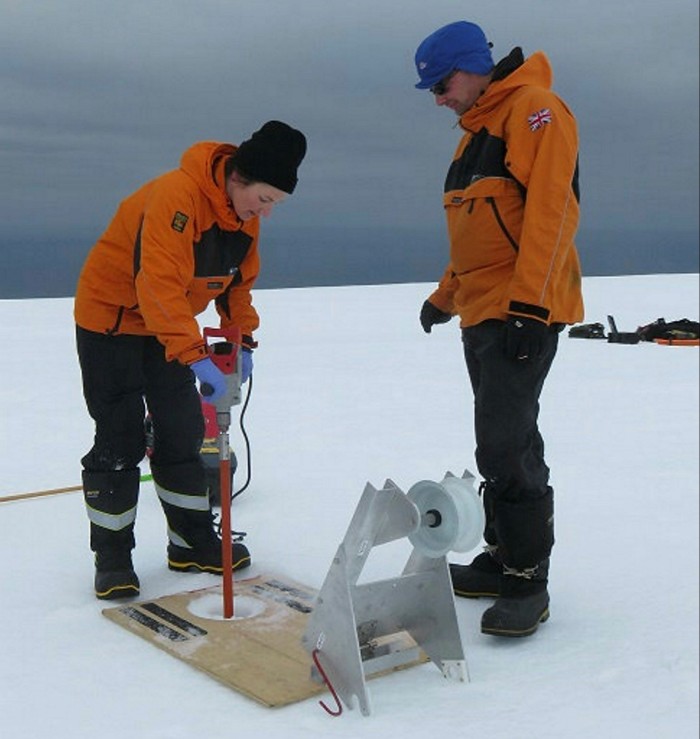Liz Thomas: my career drilling ice cores in Antarctica

Simply sign up to the Climate change myFT Digest -- delivered directly to your inbox.
Waking up in a small tent with a -30C blizzard blowing outside is just part of the job for Liz Thomas. As a paleo-climatologist for the British Antarctic Survey, she leads the institute’s research on ice cores, which contain vital information about the Earth’s past climate.
“They are perfect little archives,” explains Thomas. “We can extract a huge amount of information from the chemistry of the ice.”
The ice that builds up over hundreds of years in glaciers and ice sheets creates a record of the weather, the snowfall and the composition of the atmosphere, which provides valuable clues about the Earth’s history. “If you think of the air we breathe, or the dust that blows around, everything in the atmosphere, in theory, you can find in the snow,” she says.
Thomas has travelled to the most remote places on the planet to drill for ice cores, including Antarctica, Greenland and the Arctic Archipelago of Svalbard, part of Norway. A map on the wall behind her shows the Weddell Sea and the Antarctic Peninsula — an area that has been heating much faster than the global average, warming about 3C since pre-industrial times.

Reaching these areas often involves an arduous weeks-long journey by icebreaker, helicopter or propeller aircraft — or a combination of all three.
But it is necessary as the ice cores provide crucial information about how the climate has changed, including how much carbon dioxide and methane was contained in the atmosphere in the past. After Thomas extracts the ice cores from a glacier or an ice sheet, they are transported — still frozen — back to the BAS lab in Cambridge for analysis.
More stories from this report
Young people are on the frontline of this fight
We must pay the cost of carbon if we are to cut it
Why the greenhouse effect matters
The rise of ‘extreme weather attribution’
Carbon counting: how much do your lifestyle choices cost the planet?
Climate tech investment boom offers hope
Climate champions around the world
As the planet gets warmer, ice is melting in critical locations — making it a race against time to extract the cores before they disappear. The remote islands of Antarctica where Thomas works, which contain some of the most interesting ice core records of recent weather data, are particularly vulnerable.
“They are right on the edge, entering a warmer climate,” she says. “The climate only needs to change very fractionally for them to melt.”
Two years on since the pandemic brought a halt to many polar research programmes, Thomas says the task is more urgent than ever: “We have a fairly limited time to go there and extract the information.”
When Thomas first decided to study oceanography and chemistry at university, she never imagined she would end up working in the freezing polar regions. “I had visions of working in the tropics, on the back of the boats,” she laughs. “But, somehow, I ended up working in a freezer.”
During her 20-year career, scientific understanding of climate change has greatly advanced, thanks in part to new technologies such as satellites and new measurement capabilities. The evidence that humans have caused climate change is now “unequivocal”, according to an IPCC report released late last month.
Data from ice cores is one reason conclusions have shifted, as they provide evidence of the link between atmospheric concentration of carbon dioxide and global temperatures.
Thomas’s speciality is analysing ice cores to see how much snow fell in past years and how patterns varied over time. Her research has uncovered a surprising result: “The amount of snowfall that we are getting now [on the Antarctic peninsula] is double what it was 100 years ago,” she says. That has big implications for sea levels, because the increased snowfall helps to lessen the impact of sea level rise caused by melting ice. “If that snow had fallen over the oceans, it would have gone into the hydrological cycle,” says Thomas.
For anyone thinking about a career in climate science, Thomas’s advice is to choose a subject that you love, and stick with it even if you don’t have top grades. “Sometimes being practical, adaptable and interested can take you a long way,” she says. “Don’t worry if you are not top of the class. I certainly wasn’t.”

As climate change starts to have a bigger impact on the planet, Thomas says she feels “hyper-aware” of the effects, because it is so visible in the places where she works: “I can see quite clearly that what is happening in recent years is really unusual.”
Despite these worrying signs, she says the history captured by the ice cores also provides grounds for hope — because it shows that human actions can help.
For example, when leaded petrol was phased out globally in the 1980s, ice cores show a corresponding drop in lead levels. Similarly, the ban on chlorofluorocarbons — ozone-destroying chemicals — in 1987 is also detectible in the ice record. “We can do a lot of bad,” Thomas observes. “But we can also do a lot of good.”

Comments